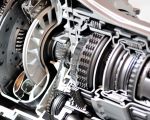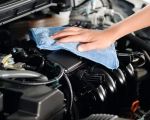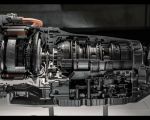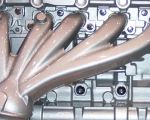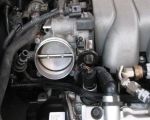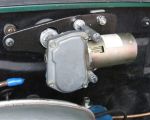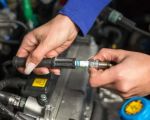There are a few things that can make a driver nervous, and one of them is when you’re cruising along the road and suddenly, your car's power steering stops working. I can vividly recall the first time I experienced this. One moment, I was driving down a straight road, and the next, I found myself struggling to turn the wheel, feeling as if I was driving a tank rather than my usual sedan. My heart skipped a beat. What had just happened? The steering was almost impossible to move, and I had no idea what caused it. This is a terrifying moment for any car owner, and I quickly realized that it wasn’t just an inconvenience but a serious safety concern. Here’s what I learned, and what I did, when my car’s power steering stopped working.
1. Recognizing the Problem
The first sign that something was wrong was obvious—my steering became incredibly stiff. It was as if someone had put a brick in the steering column. As I turned the wheel, I had to exert way more force than usual to navigate even small turns. Power steering is a critical system that assists with steering the car, and when it stops working, it can make driving incredibly difficult and dangerous. At that moment, I knew something had failed in the power steering system, but I wasn’t sure exactly what.
1.1 What is Power Steering?
If you’re not already familiar with how power steering works, let me break it down a bit. In modern cars, power steering uses either hydraulic or electric assist to help the driver turn the wheel with ease. Hydraulic systems use pressurized fluid, while electric power steering (EPS) uses an electric motor. When either system malfunctions, you’re left with the feeling that your car has suddenly become much harder to drive. It’s like trying to move a heavy object without proper tools. In my case, it felt like I had to fight the wheel to make any turns.
1.2 Symptoms of Power Steering Failure
Before my power steering completely failed, I experienced several warning signs. The first was a whining noise when I turned the wheel. This could indicate a low fluid level or air in the hydraulic system. As the problem worsened, I noticed difficulty turning, especially at low speeds or when parking. If you’re experiencing these symptoms, it’s important not to ignore them, as they could indicate a problem that might eventually leave you without any steering assist at all.
2. Steps to Take When Power Steering Stops Working
Once I realized that my power steering was malfunctioning, I knew I had to stay calm and figure out what to do next. The first instinct may be to panic, but there are practical steps you can take to safely handle the situation. Here's what I did:
2.1 Try to Stay Calm and Assess the Situation
If you find yourself in a situation where the power steering fails, the first thing you need to do is stay calm. While it might feel overwhelming, remember that your car is still functional, even if the steering is more difficult. If you’re on the road, slowly and carefully steer your car to a safe spot, such as the shoulder or a parking lot. Don’t attempt to make sharp turns or abrupt maneuvers. The power steering is no longer assisting you, so turning the wheel will take much more effort, and you might lose control of the vehicle if you're not careful.
2.2 Check the Fluid Level
If your car uses hydraulic power steering, one of the first things you should check is the power steering fluid level. Low fluid is often the culprit when power steering stops working, and I discovered this the hard way. I opened the hood and located the power steering fluid reservoir (it’s usually marked clearly). Sure enough, the fluid level was dangerously low. I topped it off with the correct type of fluid, which allowed the system to function properly again—at least temporarily. If the fluid level is fine, the issue might be something more complex, like a leak or a failing pump.
2.3 Listen for Unusual Noises
Another key indicator is noise. If your car’s power steering system is still operational but making a whining or groaning noise, this could mean that the pump is struggling or there’s air in the system. I made sure to listen for any strange noises when I started the car after adding fluid. If you hear a high-pitched whining sound, it’s worth investigating further. While I was able to resolve the fluid issue temporarily, it was clear that I needed professional help to fully fix the problem.
2.4 Don’t Overexert Yourself
If you’re still driving but the steering has become excessively stiff, don’t overexert yourself. Trying to force the wheel too much could cause further damage to the system. I learned the hard way that forcing turns when power steering isn’t working properly can lead to broken components, so I kept my turns slow and steady. I also avoided parking in tight spaces, as the lack of steering assist made maneuvering in small areas much more difficult.
3. Common Causes of Power Steering Failure
Once I started investigating the issue more, I learned that there are several common causes of power steering failure. It wasn’t just about adding fluid or fixing the pump; there were deeper issues that could cause problems down the road.
3.1 Low Power Steering Fluid
As I mentioned earlier, one of the most common reasons for power steering failure is low fluid. This usually happens due to leaks in the system. I’ve seen this happen in a few cars, including my own. Over time, seals and hoses can degrade, allowing fluid to leak out. If you’re constantly topping off your fluid, there’s a good chance you have a leak somewhere that needs to be addressed.
3.2 Worn Power Steering Pump
The power steering pump is responsible for pressurizing the fluid and helping you turn the wheel. If the pump wears out, it can stop supplying the necessary pressure to the system, leading to a loss of steering assistance. In my case, the whining noise I heard suggested that the pump was starting to fail, which required a replacement. A worn-out pump usually requires professional repair, as it can be a complex job to fix.
3.3 Broken Serpentine Belt
Another common issue that can cause power steering failure is a broken serpentine belt. This belt drives many of the engine’s components, including the power steering pump. If the belt breaks or becomes loose, the pump will stop working, and so will your steering assist. I remember when my belt snapped unexpectedly, and I had no power steering at all. If this happens, it’s a sign that you need to replace the belt immediately.
3.4 Electrical Issues (For Electric Power Steering)
For vehicles with electric power steering (EPS), the problem could be related to the car’s electrical system. A faulty motor, a bad sensor, or an electrical connection could cause the steering to stop working. When my car experienced electric power steering failure, I had to have the electrical components checked, which ultimately led to replacing a faulty motor. Diagnosing and fixing electrical issues is something best left to professionals.
4. When to Seek Professional Help
While there are things you can try on your own, some power steering problems are too complex or dangerous to fix yourself. If adding fluid didn’t solve the issue, or if you’re hearing strange noises or experiencing difficulty turning the wheel even after topping off the fluid, it’s time to consult a professional mechanic. I learned this lesson after trying to fix the issue myself and realizing that the underlying problem was beyond my ability to repair without proper tools.
4.1 Towing Services
If your car is completely immobilized due to power steering failure, you may need a tow to a trusted mechanic. Fortunately, I found that Rescue & Towing offers reliable towing services to get my car to the repair shop safely. They specialize in both towing and mechanical repairs, which made my experience much smoother. If you find yourself in a situation where you can’t drive your car safely, I recommend visiting Rescue & Towing for quick and professional assistance.
4.2 Professional Repairs
Whether it’s replacing a damaged power steering pump, fixing a leak, or diagnosing an electrical issue, a professional mechanic has the tools and expertise needed to restore your car ’s power steering system. I’ve learned that while DIY fixes can work for small problems, professional repairs are often the best solution for complex issues.
If your power steering has stopped working, don’t delay seeking help. The sooner you address the issue, the better. For reliable towing and mechanical repair services, check out Rescue & Towing. Their experienced team is always ready to assist with your car’s power steering and any other repair needs. Visit Rescue & Towing to learn more or request assistance.














